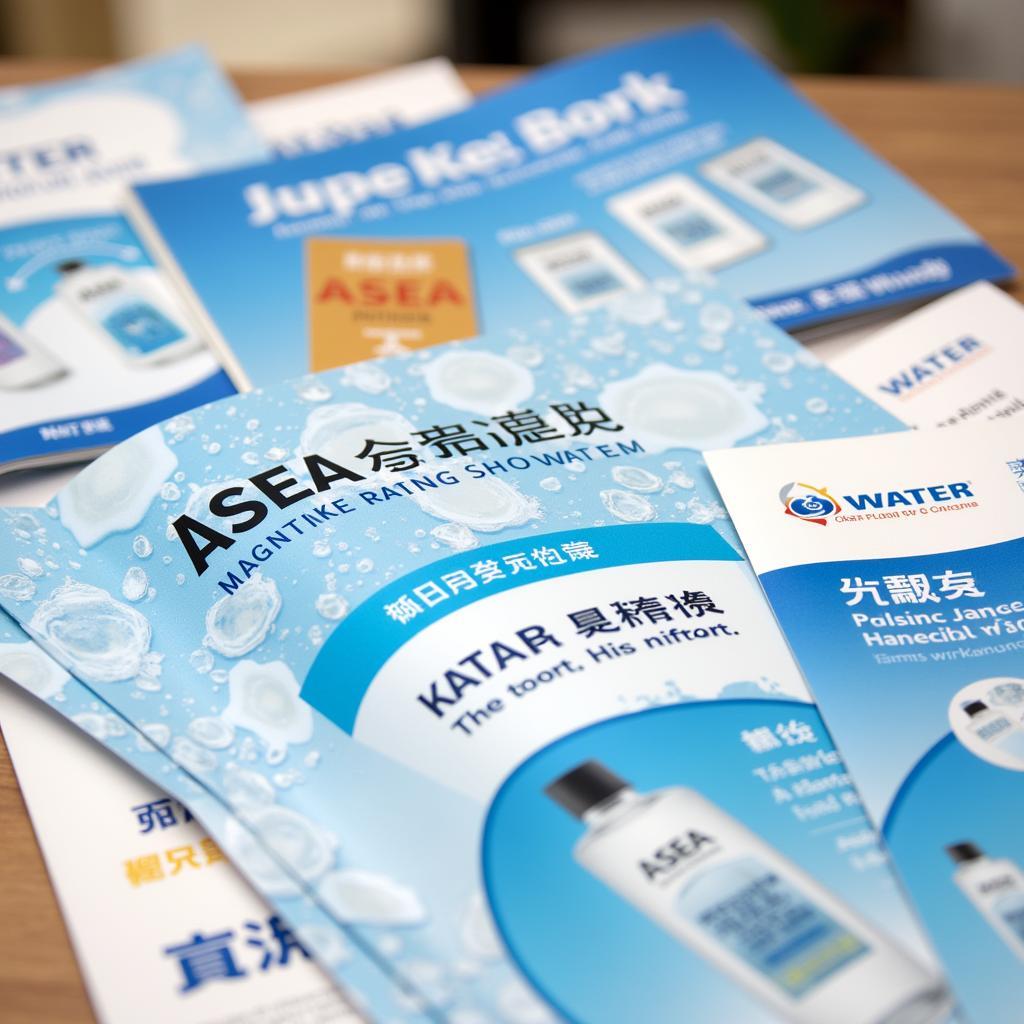ASEAN categories encompass a wide range of classifications used to organize and understand the diverse aspects of the Association of Southeast Asian Nations (ASEAN). These categories provide a framework for analyzing and navigating various sectors, initiatives, and agreements within the regional bloc.
Navigating ASEAN’s Complexity through Categories
From economic cooperation to socio-cultural collaboration, ASEAN categories help streamline information and facilitate a deeper understanding of the organization’s multifaceted nature. Whether you are a researcher, a business professional, or simply someone interested in learning more about ASEAN, grasping these categories is crucial.
Key ASEAN Categories
Several overarching categories define ASEAN’s structure and areas of focus. These include:
1. Pillars of the ASEAN Community:
- Political-Security Community: This pillar aims to promote peace, stability, and cooperation on security matters among member states. It encompasses areas like conflict prevention, counter-terrorism, and transnational crime.
- Economic Community: This pillar focuses on fostering economic integration and creating a single market and production base. It covers trade liberalization, investment facilitation, and economic cooperation in various sectors.
- Socio-Cultural Community: This pillar aims to enhance cooperation in areas like education, culture, health, and social development to strengthen ASEAN’s regional identity and improve the well-being of its people.
2. ASEAN Sectoral Bodies:
These bodies operate under the three pillars and address specific areas of cooperation. Some examples include:
- ASEAN Secretariat: The central administrative body responsible for coordinating ASEAN activities and supporting member states.
- ASEAN Free Trade Area (AFTA): Established to increase regional trade by reducing tariffs and eliminating non-tariff barriers among member states.
- ASEAN Regional Forum (ARF): A key platform for dialogue and cooperation on political and security issues in the Asia-Pacific region.
3. ASEAN Agreements and Declarations:
Over the years, ASEAN has established a network of agreements and declarations to formalize its commitments in various areas. These legal instruments provide a framework for cooperation and integration. Some key examples include:
- ASEAN Charter: This legally binding document outlines the principles, purposes, and institutional framework of ASEAN.
- ASEAN Comprehensive Recovery Framework (ACRF): This framework guides the region’s response and recovery efforts in the wake of the COVID-19 pandemic.
- Ha Noi Declaration on ASEAN Community Vision 2025: This declaration outlines the shared vision and aspirations of ASEAN member states for the future.
Importance of Understanding ASEAN Categories
Having a firm grasp of ASEAN categories is crucial for several reasons:
- Enhanced Navigation: They provide a roadmap for understanding the complex organizational structure and activities of ASEAN.
- Targeted Research: Researchers can focus their efforts effectively by identifying the specific categories relevant to their studies.
- Effective Engagement: Businesses and organizations can identify relevant stakeholders and opportunities for collaboration by understanding the different sectors and initiatives within ASEAN.
- Informed Policymaking: Policymakers can make informed decisions and develop effective strategies by utilizing the framework provided by these categories.
ASEAN Categories in Action: A Real-World Example
Let’s consider an example of how understanding ASEAN categories can be beneficial. Imagine you are a business owner looking to expand into Southeast Asia. By understanding the ASEAN Economic Community pillar and its initiatives like the ASEAN Free Trade Area (AFTA), you can navigate the complexities of regional trade regulations and identify potential markets for your products or services.
“Understanding the nuances of ASEAN categories is crucial for businesses like mine. By leveraging initiatives like AFTA, we can streamline our operations and access new markets within the region.” – [Fictional Expert Name], CEO of [Fictional Company Name] operating in the [Fictional Industry] sector in Southeast Asia
Conclusion
ASEAN categories provide a valuable lens for comprehending the complexities of this dynamic regional organization. Whether you are a seasoned expert or a curious individual, embracing these classifications will enhance your understanding of ASEAN’s structure, initiatives, and overall impact. By delving deeper into these categories, you gain valuable insights into the multifaceted nature of ASEAN and its role in shaping the future of Southeast Asia and beyond.
FAQs about ASEAN Categories
1. What is the main purpose of the ASEAN Political-Security Community?
The ASEAN Political-Security Community aims to maintain peace, security, and stability in the region through dialogue, cooperation, and confidence-building measures among member states.
2. How does the ASEAN Free Trade Area (AFTA) benefit businesses operating within ASEAN?
AFTA aims to increase trade between member states by reducing or eliminating tariffs and non-tariff barriers, creating a more predictable and business-friendly environment.
3. Where can I find the latest news and updates on specific ASEAN categories and initiatives?
The ASEAN Secretariat website, official publications, and reputable news sources specializing in Southeast Asian affairs are valuable resources for staying informed.
4. How often are ASEAN agreements and declarations reviewed and updated?
The frequency of review and updates varies depending on the specific agreement or declaration. However, ASEAN mechanisms are in place to ensure relevance and effectiveness over time.
5. What are some key challenges faced by ASEAN in implementing its various categories and initiatives?
Some challenges include narrowing the development gap between member states, addressing non-traditional security threats, and fostering a stronger sense of regional identity and unity.
Need Further Assistance?
For inquiries and support regarding Asean Media, contact us:
Phone Number: 0369020373
Email: [email protected]
Address: Thôn Ngọc Liễn, Hiệp Hòa, Bắc Giang, Việt Nam
Our dedicated customer support team is available 24/7 to assist you.


